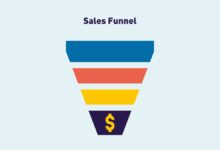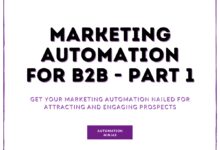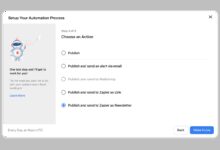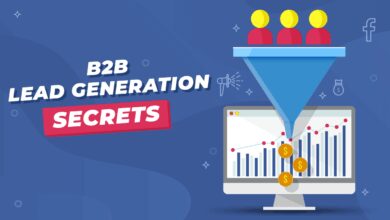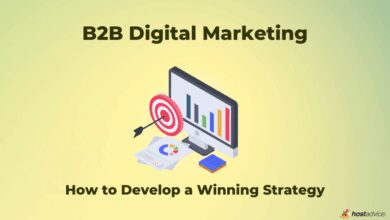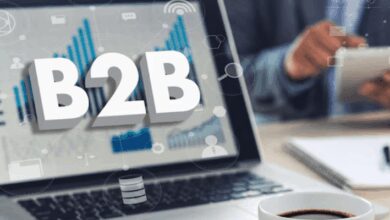B2B Lead Scoring: 7 Powerful Strategies to Skyrocket Sales
Want to stop wasting time on unqualified leads? B2B lead scoring is your secret weapon. By assigning values to prospects based on behavior and demographics, you can focus on those most likely to convert—boosting efficiency, alignment, and revenue.
What Is B2B Lead Scoring and Why It Matters

B2B lead scoring is a systematic method used by sales and marketing teams to rank potential customers (leads) based on their perceived value to the organization. Unlike B2C environments where volume often drives strategy, B2B sales cycles are longer, more complex, and involve multiple decision-makers. This makes identifying high-potential leads crucial for optimizing resources and maximizing ROI.
Defining B2B Lead Scoring
At its core, b2b lead scoring involves assigning numerical values—positive or negative—to leads based on specific criteria. These criteria typically fall into two categories: demographic fit and behavioral engagement. The higher the score, the more likely the lead is to become a customer.
- Demographic data includes job title, company size, industry, and geographic location.
- Behavioral data tracks actions like website visits, content downloads, email opens, and webinar attendance.
- Negative scoring penalizes disengagement, such as unsubscribing from emails or visiting pricing pages without follow-up.
The Evolution of Lead Scoring in B2B
Lead scoring isn’t new—it’s been around since the early days of CRM systems. However, its sophistication has evolved dramatically. In the past, scoring was often manual and subjective. Today, thanks to marketing automation platforms like HubSpot and Marketo, scoring is data-driven, dynamic, and integrated across departments.
“Lead scoring transforms guesswork into strategy. It’s the bridge between marketing effort and sales results.” — MarketingProfs
Why B2B Lead Scoring Is Non-Negotiable
Without b2b lead scoring, sales teams risk chasing dead-end leads while high-potential prospects slip through the cracks. According to a study by Salesforce, companies using lead scoring experience a 77% increase in lead generation ROI. It also improves sales and marketing alignment, reduces cycle times, and increases conversion rates.
The Core Components of Effective B2B Lead Scoring
To build a successful b2b lead scoring model, you need to understand its foundational elements. These components ensure that your scoring system is not only accurate but also actionable and scalable across your organization.
Demographic Scoring: Who Are Your Ideal Customers?
Demographic scoring evaluates whether a lead matches your ideal customer profile (ICP). This includes firmographic data such as company size, revenue, industry, and location, as well as personal attributes like job title, department, and seniority.
- For example, a CTO at a tech startup with 50–200 employees might score higher than a junior developer at a small nonprofit.
- Tools like LinkedIn Sales Navigator can help validate these attributes during lead enrichment.
- It’s essential to align demographic criteria with your sales team’s experience and historical win data.
Behavioral Scoring: What Are Leads Doing?
Behavioral scoring tracks how prospects interact with your brand. This includes digital footprints across your website, emails, social media, and events. The more engaged a lead is, the higher their score should be.
- Positive behaviors: downloading a whitepaper, attending a demo, visiting the pricing page multiple times.
- Negative behaviors: ignoring emails, unsubscribing, or bouncing from key pages.
- Advanced systems use time decay—recent activity is weighted more heavily than older actions.
Explicit vs. Implicit Data in Scoring
Understanding the difference between explicit and implicit data is critical in b2b lead scoring. Explicit data is information a lead provides directly, such as filling out a form with their job title or company name. Implicit data is inferred from behavior, like time spent on a product page.
- Explicit data helps determine fit—whether the lead matches your ICP.
- Implicit data reveals interest—how eager the lead is to learn more.
- The most effective models combine both to create a holistic view of lead readiness.
How to Build a B2B Lead Scoring Model Step by Step
Creating a b2b lead scoring model isn’t a one-size-fits-all process. It requires collaboration, data analysis, and continuous refinement. Follow these steps to build a model that drives real results.
Step 1: Define Your Ideal Customer Profile (ICP)
Before scoring leads, you need to know who you’re scoring. Your ICP is a detailed description of the companies and individuals most likely to benefit from your product or service.
- Analyze your existing customer base to identify common traits among your most successful clients.
- Use surveys, interviews, and CRM data to gather insights from sales and customer success teams.
- Document firmographic, technographic, and behavioral patterns that define your ICP.
Step 2: Collaborate with Sales to Identify Key Indicators
Sales teams have firsthand experience with what makes a lead qualified. Their input is invaluable in determining which attributes and behaviors correlate with closed deals.
- Host workshops with sales reps to map out the typical buyer journey.
- Ask them to identify red flags and green flags they look for in prospects.
- Use this qualitative feedback to inform your scoring criteria.
Step 3: Assign Point Values Based on Impact
Not all actions are created equal. Assign point values based on how strongly each attribute or behavior predicts conversion.
- High-impact actions (e.g., requesting a demo) might be worth +25 points.
- Medium-impact actions (e.g., downloading a case study) could be +10.
- Low-impact actions (e.g., visiting the homepage) might only be +2.
“The key is proportionality. A lead who visits your site once shouldn’t score the same as one who attends a live demo.” — HubSpot Blog
Integrating B2B Lead Scoring with Marketing Automation
Manual lead scoring is time-consuming and error-prone. To scale effectively, you need to integrate your b2b lead scoring model with marketing automation tools.
Choosing the Right Marketing Automation Platform
Not all platforms are created equal when it comes to lead scoring capabilities. Look for tools that offer:
- Customizable scoring rules
- Lead grading (fit vs. interest)
- Integration with your CRM
- Real-time updates and alerts
Popular options include HubSpot, Marketo, Pardot, and ActiveCampaign.
Setting Up Scoring Rules in Your CRM
Once you’ve chosen a platform, configure your scoring rules within the system. This involves mapping data fields, defining triggers, and assigning point values.
- Create rules like: “If job title = ‘Director or above’, add +20 points.”
- Set behavioral triggers: “If lead downloads pricing guide, add +30 points.”
- Use negative scoring: “If lead hasn’t opened an email in 30 days, subtract 10 points.”
Automating Lead Handoff to Sales
One of the biggest benefits of b2b lead scoring is automating the handoff process. Define a threshold score that qualifies a lead for sales outreach.
- For example, leads scoring 100+ are automatically routed to a sales rep via CRM assignment.
- Set up notifications so sales teams know when a high-value lead is ready.
- Include lead score and activity history in the handoff for context.
Advanced B2B Lead Scoring Techniques
Once you’ve mastered the basics, it’s time to level up. Advanced b2b lead scoring techniques leverage predictive analytics, AI, and multi-touch attribution to deliver even greater precision.
Predictive Lead Scoring with Machine Learning
Predictive lead scoring uses algorithms to analyze historical data and identify patterns that indicate future conversion likelihood.
- Platforms like 6sense and Infer specialize in AI-driven scoring.
- These systems continuously learn from new data, improving accuracy over time.
- They can uncover non-obvious correlations—like how visiting a specific blog post predicts churn risk.
Account-Based Scoring for Enterprise Sales
In account-based marketing (ABM), scoring isn’t just about individuals—it’s about entire accounts. Account-based scoring aggregates scores from multiple contacts within a target company.
- For example, if three decision-makers from the same company engage with your content, the account score increases.
- This helps prioritize which accounts to target with personalized campaigns.
- Tools like Demandbase and Terminus support this approach.
Time Decay and Recency Weighting
A lead who downloaded a whitepaper six months ago is less relevant than one who just attended a demo. Time decay ensures that older behaviors lose value over time.
- Implement a decay rate—e.g., subtract 2 points per week from behavioral scores.
- Reset scores after a certain period of inactivity.
- This keeps your lead list fresh and reflective of current interest.
Measuring the Success of Your B2B Lead Scoring Strategy
Building a b2b lead scoring model is just the beginning. To ensure long-term success, you must measure its performance and make data-driven adjustments.
Key Metrics to Track
Monitor these KPIs to evaluate the effectiveness of your lead scoring system:
- Lead-to-Customer Conversion Rate: Are scored leads converting at a higher rate?
- Sales Cycle Length: Is the time from lead to close decreasing?
- Sales Acceptance Rate: Are sales teams accepting more leads as qualified?
- Marketing-Qualified Lead (MQL) Volume: Is the number of high-scoring leads increasing?
- Revenue Attribution: How much revenue is directly tied to scored leads?
Conducting Regular Scoring Audits
Your market, product, and customer base evolve—so should your scoring model. Conduct quarterly audits to ensure accuracy.
- Review which criteria are driving conversions and which aren’t.
- Adjust point values based on new data.
- Remove outdated rules and add new ones based on emerging trends.
Aligning Sales and Marketing with Feedback Loops
A feedback loop between sales and marketing ensures the scoring model stays relevant. Sales should report which leads were truly qualified and why.
- Use CRM fields to let sales reps rate lead quality after follow-up.
- Hold monthly syncs to discuss scoring performance.
- Adjust scoring rules based on real-world outcomes.
Common Pitfalls in B2B Lead Scoring (And How to Avoid Them)
Even well-intentioned b2b lead scoring initiatives can fail. Here are the most common mistakes and how to sidestep them.
Overcomplicating the Scoring Model
It’s tempting to add dozens of scoring rules, but complexity kills adoption. Start simple and scale gradually.
- Focus on 5–10 high-impact criteria first.
- Test and refine before adding more layers.
- Ensure the model is easy for both marketing and sales to understand.
Ignoring Sales Feedback
If sales teams don’t trust the scoring model, they’ll ignore it. Their input is essential for credibility.
- Involve sales early in the design process.
- Make it easy for them to provide feedback on lead quality.
- Act on their suggestions to build buy-in.
Failing to Update the Model Over Time
A static scoring model becomes obsolete. Markets change, products evolve, and buyer behavior shifts.
- Schedule regular reviews—at least every quarter.
- Use A/B testing to compare scoring variations.
- Stay agile and responsive to new data.
Future Trends in B2B Lead Scoring
The future of b2b lead scoring is smarter, faster, and more integrated. Emerging technologies are reshaping how companies identify and engage high-value prospects.
AI-Powered Intent Data Integration
Intent data reveals when companies are actively researching solutions like yours—before they even visit your site. AI platforms like 6sense and Gombi analyze third-party browsing behavior to detect buying signals.
- Integrate intent data into your scoring model to prioritize leads showing active interest.
- Combine first-party and third-party data for a 360-degree view.
- React in real-time with targeted ads and content.
Real-Time Scoring and Engagement
Tomorrow’s scoring systems won’t wait for batch updates. Real-time scoring triggers immediate actions—like live chat invitations or personalized emails—based on live behavior.
- Use event-driven architectures to update scores instantly.
- Trigger sales alerts the moment a lead hits a threshold.
- Deliver hyper-personalized experiences based on current intent.
Scoring Across the Entire Customer Lifecycle
Lead scoring doesn’t end at conversion. Forward-thinking companies now use scoring to identify upsell, cross-sell, and retention opportunities.
- Score existing customers for expansion potential.
- Use engagement data to predict churn risk.
- Align customer success teams with scoring insights for proactive outreach.
What is b2b lead scoring?
B2B lead scoring is a methodology used to rank business prospects based on their likelihood to become customers. It combines demographic and behavioral data to assign a numerical value, helping sales and marketing teams prioritize efforts on the most promising leads.
How do you calculate a lead score?
Lead scores are calculated by assigning points for attributes (like job title or company size) and behaviors (like email opens or demo requests). Positive actions add points, while disengagement subtracts them. The total score determines lead qualification.
What’s the difference between lead scoring and lead grading?
Lead scoring measures engagement (behavior), while lead grading assesses fit (demographics). Together, they provide a complete picture: a lead can be highly engaged but poor fit, or perfect fit but inactive.
Which tools support b2b lead scoring?
Popular tools include HubSpot, Marketo, Pardot, ActiveCampaign, and specialized platforms like 6sense and Demandbase. These integrate with CRMs to automate scoring, routing, and follow-up.
How often should you review your lead scoring model?
At a minimum, review your b2b lead scoring model quarterly. However, high-growth companies may benefit from monthly audits to adapt to market changes, product updates, and sales feedback.
B2B lead scoring is no longer optional—it’s a strategic imperative. By systematically evaluating leads based on fit and interest, companies can dramatically improve sales efficiency, marketing ROI, and customer acquisition. From defining your ideal customer profile to leveraging AI-driven intent data, the journey to effective lead scoring requires collaboration, data, and continuous optimization. Start simple, align your teams, measure results, and evolve. The payoff? More closed deals, shorter sales cycles, and a smarter, more scalable growth engine.
Further Reading:

